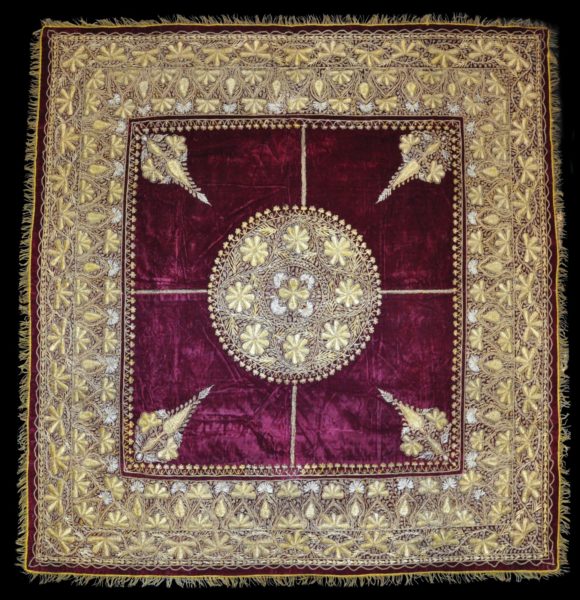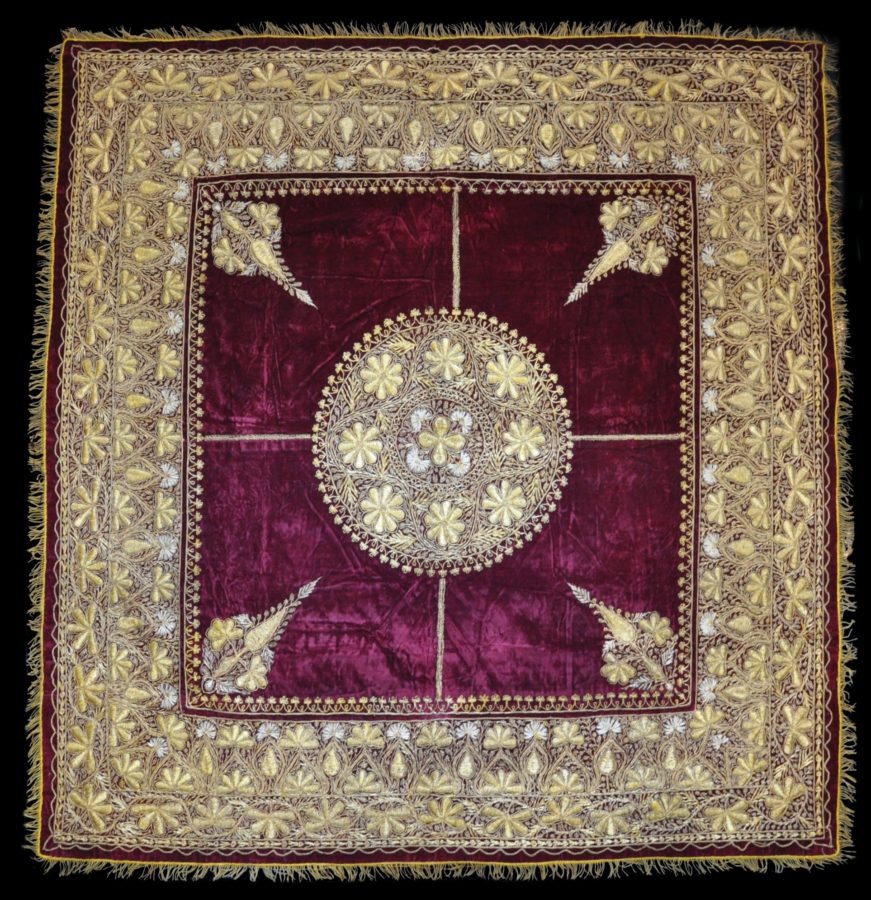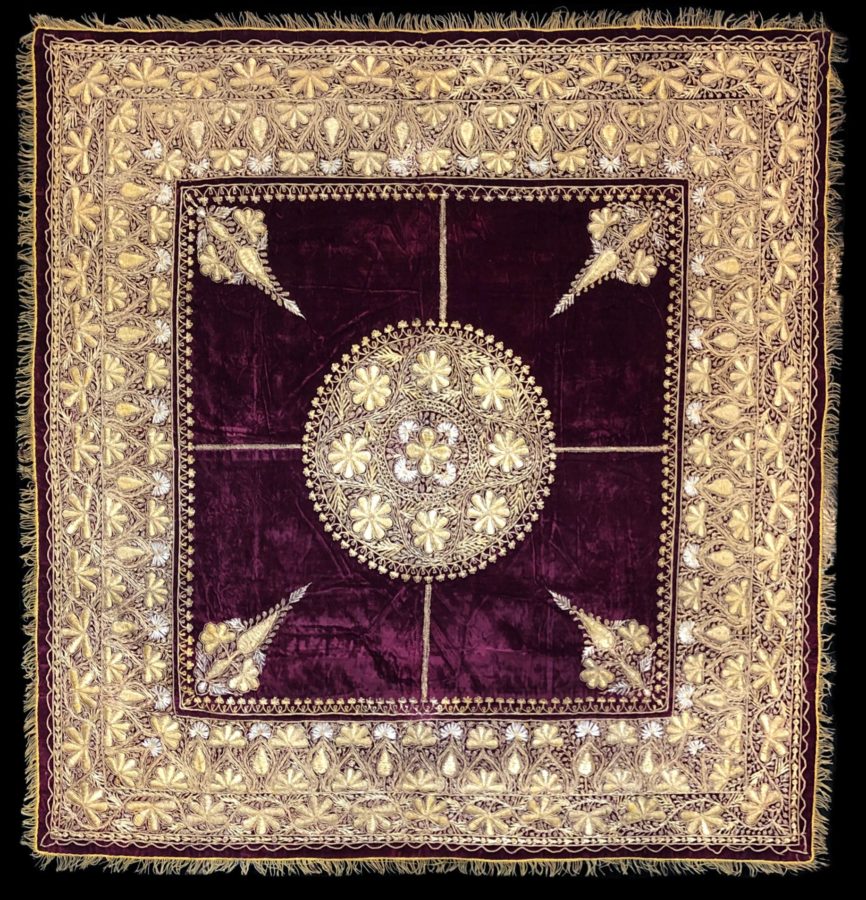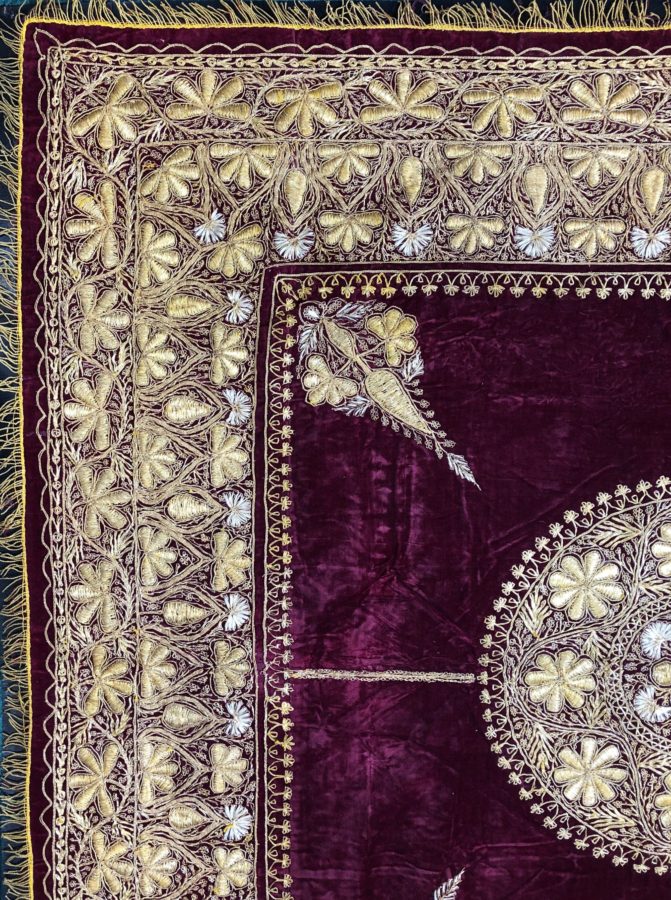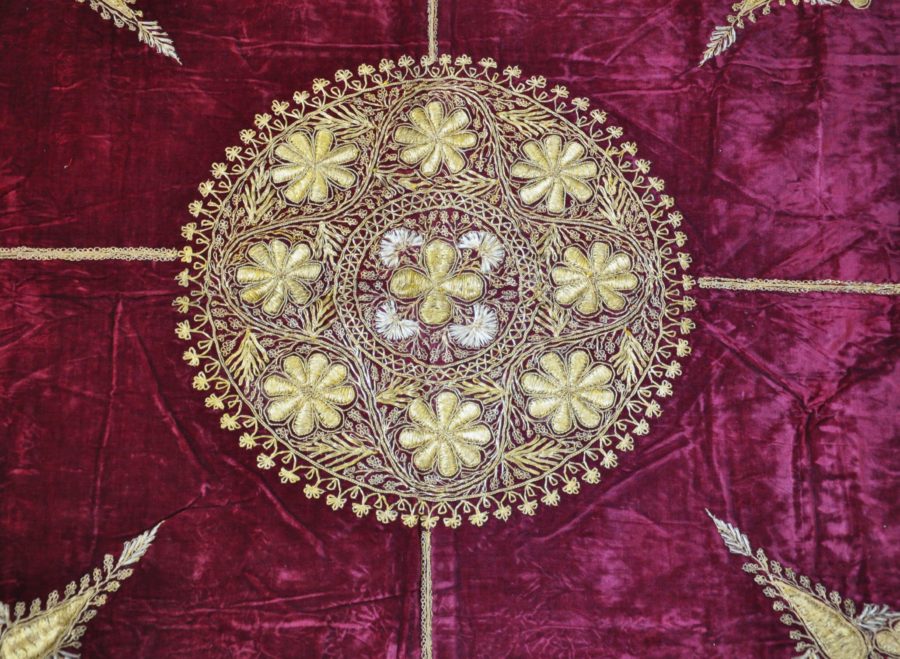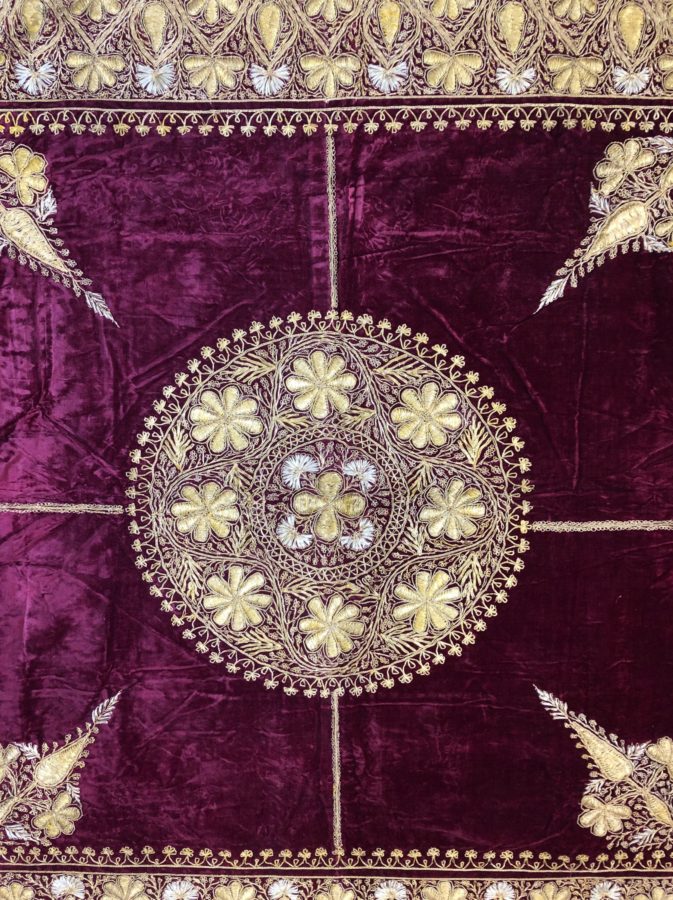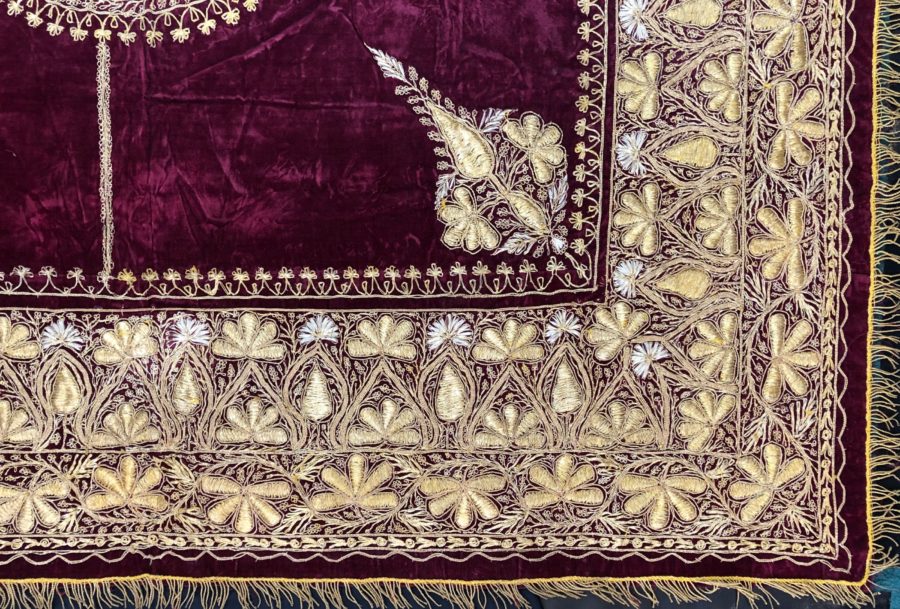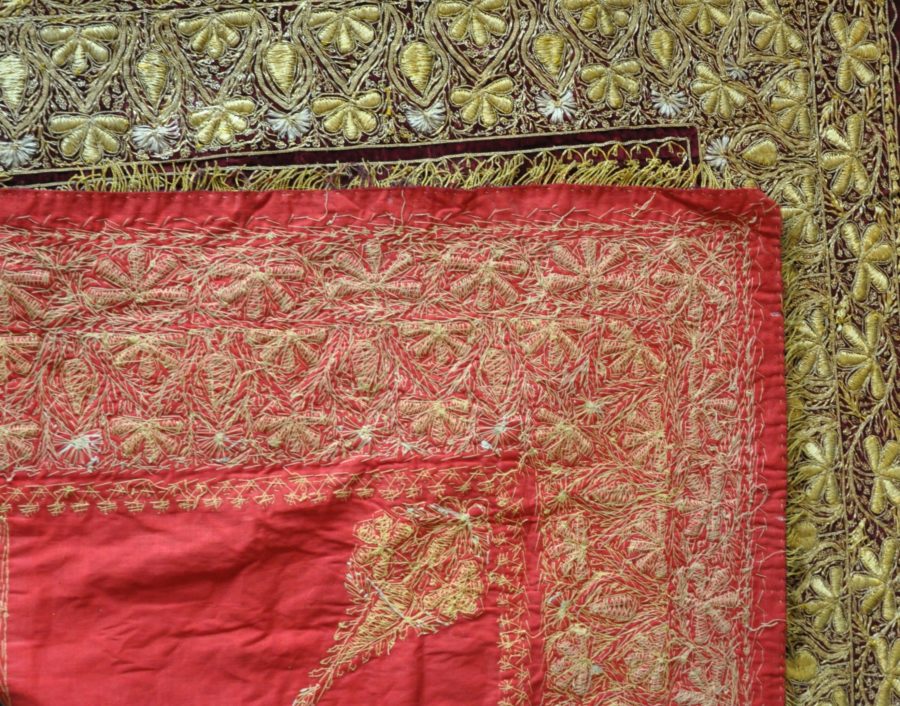Sri Lankan textiles are comparatively rare and not only is this example large, it is also in excellent condition.
It comprises a large red-maroon velvet square, backed with a red linen, and couched with gold-wrapped metallic thread in leafy and floral designs. There is a large, central roundel and a wide border all infilled with the same patterning, and an arabesque in each corner.
The edges are decorated with a gold-wrapped thread fringe.
The textile has been couched rather than embroidered, with the thread having been sewn onto the velvet rather than threaded through it. The couching has been supplemented by padding to give much of the main features (flower petals and the like) a raised appearance.
The style of the work on this textile is similar to the Zardozi work executed in northern India by Muslim male embroiderers in which velvets and other textiles were richly couched and embroidered with metallic thread and decorated with metallic spangles and so on. Much of that work was destined for the costumes of the sultans and other princely types in India’s Islamic courts. It is believed that the zardozi techniques were learned from the Portuguese, and so it is likely to be the case here. (The Portuguese first reached Sri Lanka in 1501.)
In Sri Lanka, garments with this type of work was reserved for the nobility and well-to-do merchants. Several of the hats worn by Kandyan chiefs and others worn by Colombo Chetty merchants that are now in Sri Lanka’s Colombo National Museum have this type of couching (see examples in Vangeyzel, 2008). Ismail (2012, p. 181) illustrates a related example that is in Malaysia’s National Textile Museum, but which is erroneously attributed to ‘North India, probably in Delhi’.
It is possible that the textile was intended as a bed covering.
As mentioned, it is in excellent condition, with few loose threads and no fading. It is likely to have been in the UK since colonial times.
References
Coomaraswamy, A.K., Mediaeval Sinhalese Art, Pantheon Books, 1956 reprint of the 1908 edition.
Ismail, M.S.Z., et al., Muzium Tekstil Negara/National Textile Museum, Department of Museums Malaysia, 2012.
Vangeyzel, G.E., Traditional Textiles in the Colombo National Museum, National Museum of Sri Lanka, 2008.
Wimalaratne, K.D.G. & D. Gomes, Costumes of Sri Lanka, 2001.


